The A - Z of Incarnations
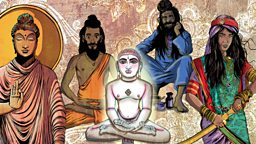
Acharanga Sutra – Manuscript based on the religious teachings of Mahavira Jain.
Arthashastra – Treatise on the art of government written by Kautilya, otherwise known as Chanakya, more than two thousand years ago.
Ayurveda – Indian approach to traditional medicine. Veda translates as knowledge and Ayu means a long life or vitality.
Bhagavad Gita – Long Hindu Sanskrit scripture which is part of the Mahabharata.
Brahma - First God in the Hindu triumvirate.
Brahman – A Hindu concept which has been described as the ‘highest reality’ or ‘world of universal spirit’.
Brahmin – Highest of the Indian caste order or estate.
Caste – Hereditary class divisions in Hindu society, based on wealth and occupation.

Charaka – Author of a manual on the Indian medical tradition known as Ayurveda.
Chola Dynasty – One of the most enduring dynasties in Southern India.
Dalit – Member of what was traditionally considered to be the lowest caste in the Indian caste system. Previously referred to as ‘untouchable’.
Deccan – Plateau in South Central India.
Dharma – Duty (Hinduism); righteousness (Jainism); teachings of Buddha (Buddhism).
Digambara– A sect belonging to the Jain religion known as ‘sky clad’, who are naked.
Diwali – Festival of light, celebrated by Sikhs, Hindus and Jains.
Ekachakra – Bengali village featured in the Mahabharata (see below), and birthplace of Nityananda, a saint in the Vaishnava tradition of Hinduism.
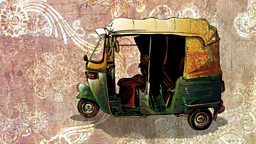
Four Noble Truths – A central teaching of Buddhism, which identifies various areas of suffering and the means of overcoming them; they are 1) the truth of suffering 2) its origin 3) its cessation 4) the path to its cessation.
Five Ks – Physical symbols of faith worn by Sikhs – Kesh (uncut hair); Kara (a steel bracelet); Kanga (a wooden comb); Kaccha (cotton underclothes); Kirpan (steel sword).
Grihastha – 'Householder' in Hinduism: the twice-born male can experience the human purposes of Purushartha. (see below).
Guru – A teacher or master of a tradition, who passes on knowledge through a lineage of disciples.
Holi – Hindu festival originally celebrating fertility and harvest.
Ishvara – Hindu concept with multiple meanings, including supreme soul, ruler, king, husband, or God.
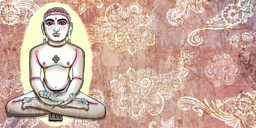
Jainism – One of India’s great religions.
Jiva – Life force.
Krishna - One of the main Hindu deities.
Kalpa Sutra – Manuscript containing the biographies of the great teachers in the Jain religion.
Karma – A concept – common to Eastern religions – of an individual’s actions influencing the person’s future.
Lakshmi – Consort of the Hindu god Vishnu (see below), goddess of wealth and purity.
Lotus Sutra – A seminal text comprising one of Buddha’s late discourses, but held back for 500 years, allowing humanity time to develop sufficiently to understand it.
Mauryan Dynasty – Dynasty from the fourth to the second century BCE.
Mahabharata – With the Ramayana, one of the two great Sanskrit epics of ancient India.
Maya – a Hindu concept meaning the reality that is substantially there but whose true nature eludes us because of the limitations of our consciousness.
Mughal Empire – Muslim dynasty that ruled much of India from 16th – 19th century.
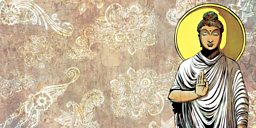
Nirvana – Buddhist concept of a state of mental serenity after destructive human emotions have been overcome.
Purushartha – Hindu doctrine that life has different goals according to a person's stage of life and position.
Orientalism - Western academic or artistic depictions of the East, including of India. Sir William Jones was one of the early English Orientalist scholars, translating numerous works from Sanskrit. Later, the term was critically used by Edward Saïd-to describe a way of looking at the East which implicitly conveyed Western superiority.
Quest – Hindu philosophy is not prescriptive about God and the Universe: individuals may seek and discover answers in the quest for life.
Refuge – Buddhists take ‘refuge’ in the Three Jewels of the faith: the Buddha; the Dharma (teachings); the Sangha (the community of the enlightened (monks and nuns).
The Samhitas - The most ancient part of the Vedas, consisting of hymns of praise to God.
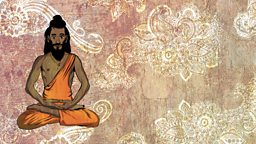
Sanskrit – Ancient Indian language, said to be the language of the gods.
Shravana Belagola – Site of a huge Jain statue of Gommata or Bahubali carved out of granite in the Indian state of Karnataka.
Shiva – Third god in the Hindu triumvirate.
Siddhartha – Name of the Buddha at his birth.
Tirthankars – A line of 24 beings who were able to cross over, or ford, from the mundane world of human suffering and violence into the realm of spiritual liberation.
Upanishads – Mystical and philosophical teachings of Hinduism.
Vedas – The most ancient religious texts, which define truth for Hindus, written in Sanskrit.
Vishnu – Second god in the Hindu triumvirate.
Wheel of Life – The ‘Bhavachakra’ is a mandala, a complex picture representing the Buddhist view of the Universe. For Buddhists, existence is a cycle of life, death, rebirth and suffering that they seek to escape altogether.
Xavier - St Francis, 16th century Jesuit who led missionary efforts in India.
Yoga – A physical, mental and spiritual practice founded in Hinduism, Buddhism and Jainism.
Zenana - (Persian: زنانه, Urdu: زنانہ, Hindi: ज़नाना). The literal meaning of the word zenana is 'of the women' or 'pertaining to women'. It contextually refers to the part of a house belonging to a Hindu or Muslim family in South Asia which is reserved for the women of the household.
